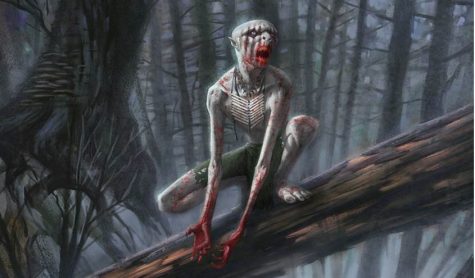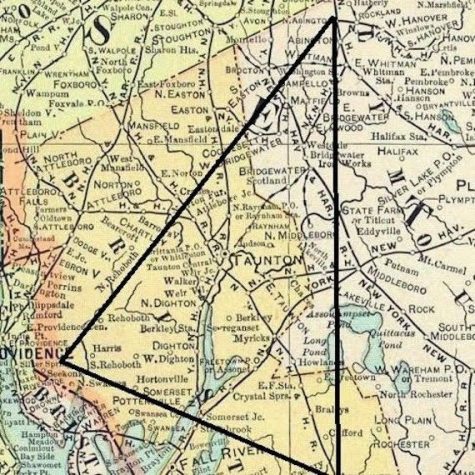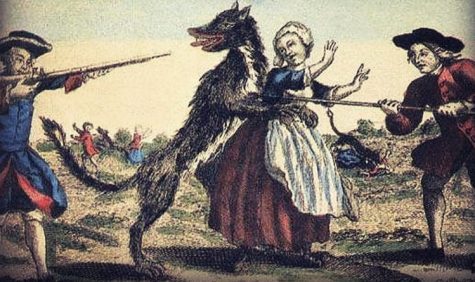Frost Bite

In the frozen forests of the north, winter is a trying time. The woods are bare of life as animals hibernate in hiding, the biting cold threatens those who cannot find shelter, and the deep, thick snow traps people within their homes. But it is said, in legends and folklore, that there is something else to fear. Hunger. Not just the hunger burrowing in one’s own stomach, but the hunger of a creature said to wander the snowy hills. The wise pray the cold gets them before it does. Welcome back, true believers, to this week’s Conspiracy Corner as we discuss the legend of the Wendigo.
For the uninitiated, the wendigo is a creature originating from Native American tribes in Canada and the northern United States. Known as the Algonquin people, they were less a strictly established nation but rather a widespread group of tribes that shared a similar culture. Each tribe had their own version of the wendigo and, therefore, the characteristics of the creature vary wildly between different areas. Some describe the wendigo as a giant constructed of ice with frozen hearts, others as pale, thin creatures. One of the most shocking descriptions is from Basil H. Johnston, an acclaimed scholar of Canadian folklore. In his book The Manitous he writes, “The Wendigo was gaunt to the point of emaciation, its desiccated skin pulled tightly over its bones. With its bones pushing out against its skin, its complexion the ash-gray of death, and its eyes pushed back deep into their sockets, the Wendigo looked like a gaunt skeleton recently disinterred from the grave. What lips it had, were tattered and bloody … Unclean and suffering from suppuration of the flesh, the Wendigo gave off a strange and eerie odor of decay and decomposition, of death and corruption”.
Yet, despite the countless interpretations of Wendigo lore amongst the various tribes, one key aspect remains the same: the creature is given physical form from an act of cannibalism. In folklore, it is said that wendigo travel the world as evil spirits and when a person committed an act of cannibalism, they invited the wendigo to possess their body. From then on, the creature – now with a physical presence in our world – would seek to satisfy its hunger. It’s said that the wendigo prowls the night in search of victims, preying on wary hunters and, on some occasions, attacking homes and villages directly. The name itself, “wendigo”, translates to “the evil spirit that devours mankind”.
This sounds like a fantastical legend but to the Native American tribes of the time, and many still today, the wendigo is something very real. In 1907, a Cree shaman called Jack Fiddler was arrested by Canadian authorities on charges of murder. Jack made no denial of what he did, claiming to have killed fourteen times. However, he added a caveat: he did not kill people, he killed wendigos. As the shaman of his tribe, it was Jack’s responsibility to kill people suspected of turning wendigo before they became a threat. Sometimes, the family of the victim would report their strange behavior to Jack and other times, the victims themselves would ask Jack to kill them to spare them the fate of becoming a wendigo.
Despite the tribe’s unanimous support for Fiddler, he was put on trial. The trial garnered national attention across Canada as it was one of the first times Canadian common law was enforced over tribal law. Sadly, Jack didn’t live to see the end of the trial as he tragically killed himself.
Other instances of the wendigo exist throughout history. For example, there is the shocking tale of Swift Runner. Swift Runner was a Cree man who worked as a guide through the dense wilderness of Alberta, Canada, working to support his wife and six children. In 1878, however, was an especially brutal winter. When spring fell, Swift Runner – and only Swift Runner – came out of the woods, confessing to local priests that his family was dead. He said they died of starvation since he could not hunt nor scavenge in the harsh weather.
The priest reported this to the Canadian Mounties, who arrested Swift Runner and forced him to lead them back to the cabin. There, they found a horrifying scene. Bones littered the floor. But unlike the story Swift Runner gave of starvation, the bones indicted that they died violently. Worse still, there was evidence of cannibalism with the marrow being sucked out of the bones and even a pot of boiled fat. The distorted Cree man then admitted he killed his family and devoured the remains, all under the influence of the evil wendigo.
Swift Runner was placed under arrest and, in 1879, was executed by hanging, the first in Alberta. One spectator who claimed to have witnessed over two dozen executions described it as “the prettiest hanging I’ve ever seen”.
Interestingly enough, it seems the wendigo may even have a basis in medical science. “Wendigo Psychosis”, first named in the 1960s, is a supposed psychological disorder that causes one to come under the delusion that they crave human flesh. What makes this supposed psychosis stand out is that it appears to be one of the few mental illnesses that is not genetic but culturally reinforced, as cases have only been found among Native American tribes already associated with wendigo lore.
“Wendigo Psychosis” presents an interesting conundrum to psychologists and anthropologists. Which came first? Did people with a mental illness that made them irrational and violent inspire the wendigo? Or does the myth and cultural importance of the creature make it something that mental illnesses latch onto? Wendigo are described as evil spirits that possess the body. Possession by evil spirits was frequently used to explain away strange behavior before psychology developed as a field of study.
If “Wendigo Psychosis” is true, an interesting cycle is born. Man believes in wendigo, man thinks himself a wendigo, man acts like wendigo, makes other men believe in wendigo – a self-sustaining circle of belief. And through that belief, the wendigo becomes real. To some extent. The evil spirits that we once called wendigo might not exist but, through our collective belief in them, they very well may come to exist in the minds of those struggling with mental illness.
In a way, the Wendigo has transcended the mythology that gave birth to it. What began life as a cautionary tale of starvation and cannibalism has taken a twisted, horrid life of its own. Though we might regard such stories as simple tall tales, the Wendigo is still very real to many people. And perhaps it is wise to respect those stories and take heed next time we find ourselves deep in the woods. You never know what could be lurking between the trees, hungering for the unwary.








RobbShaw // Nov 21, 2021 at 12:49 am
Thanks for such an informative and interesting read..,only hope to see much more in and along these Fortean and folklore topics and lines of data/knowledge!
Keep up the outstanding work friends!
Sincerely..,
Robbshaw…ala point pleasant wv: )